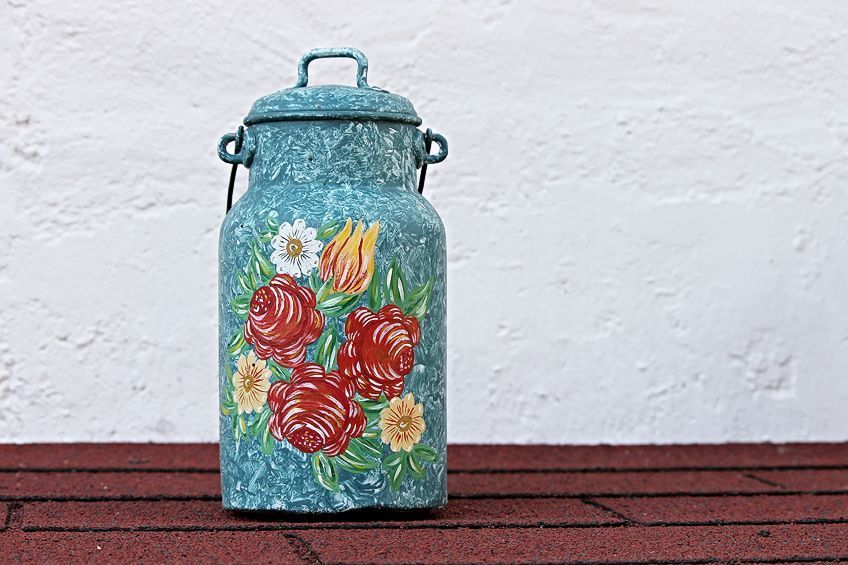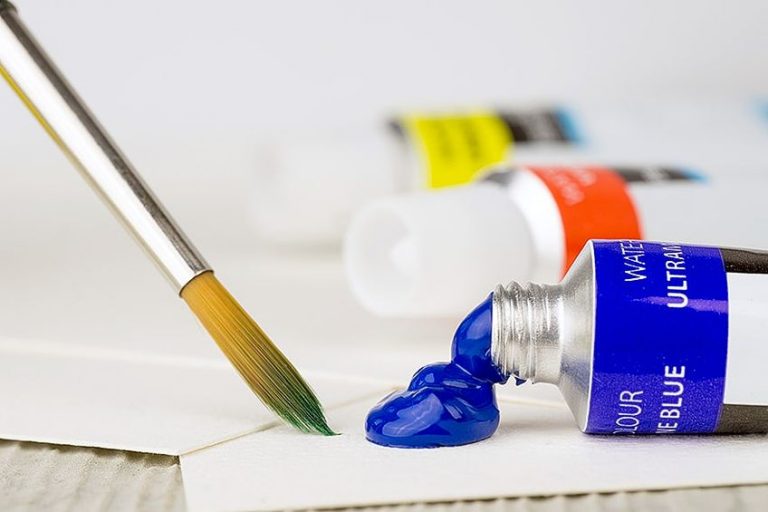Can You Use Acrylic Paint on Metal? – Paint Metal With Acrylic
Metal has become an invaluable part of our everyday lives. We use it in virtually every facet of our existence, from farming to cooking, to engineering, and even the creation of arts and crafts. Metal pieces are often integrated into installation artwork and/or used to frame paintings and sketch work. Metal workpieces might not always be your desire though, after all not every occasion calls for silver and bronze. This being said, you might have considered painting your metal workpiece, but which paint type works on metal? Will acrylic paint stick to metal? Acrylic paint is arguably the most popular type of paint around, but can you use acrylic paint on metal? Let’s have a look at whether acrylic paint can be used on metal, and if so, what the best way to go about it is.
Can You Use Acrylic Paint on Metal?
Will acrylic paint stick to metal? Acrylic paint can be used on a number of metal surfaces. Acrylic paint is one of the most versatile paint types on the planet, it can be used on plastic, paper, metal, wood, vinyl, glass, and even rubber in some instances! Acrylic paint is actually relatively new, as oil-based paints were the go-to surface coating for a number of years before acrylic paint was discovered.
What exactly is acrylic paint, you ask? Well, acrylic paint is essentially pigments suspended in an acrylic polymer, which have been mixed with binders and stabilizing agents.
This unique composition gives acrylic paint a unique texture and look, which makes it easily identifiable and easy to work with. The elements that make up acrylic paint are actually what allow it to adhere to metal surfaces so well.
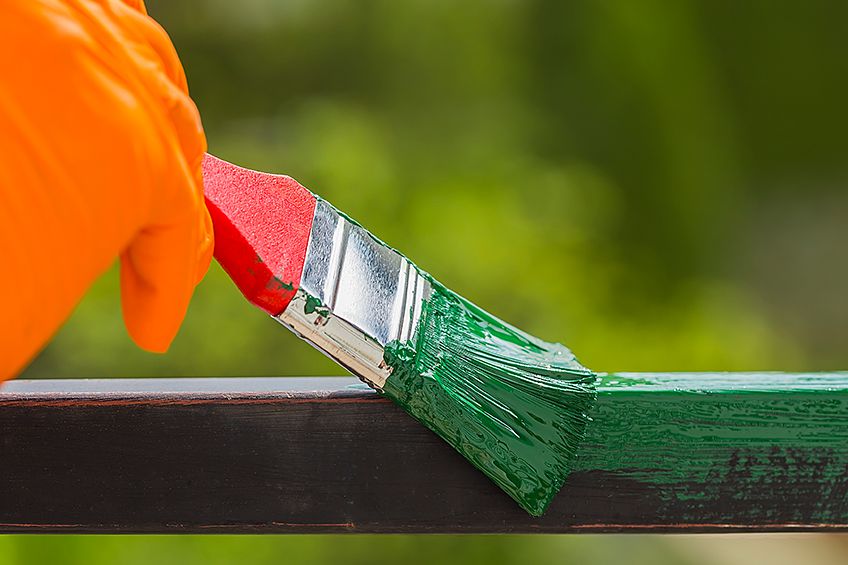
Will acrylic paint stick to metal while wet? Yes. If the surface is prepared correctly acrylic paint will most definitely stick to metal even while wet. Using acrylic paint on metal is all about the preparation of the surface as well as the paint, ensuring that both are ready for the bonding process once the paint has been applied. Will acrylic paint stick to the metal if it’s extremely hot or cold? Paint might not stick to the metal if it’s too hot cold or too hot, but it is not likely to cure and dry as intended.
Ensuring that your metal surface as well as your workspace are within a certain temperature range is an important step in making sure that your acrylic paint works as intended once applied.
How to Paint on Metal With Acrylic Paint
Wondering how to paint metal on with acrylic paint? As we mentioned previously, the key to ensuring that your acrylic paint sticks to your metal workpiece is in the preparation process. Properly preparing both your workpiece and your workspace can go a long way in ensuring that your metal workpiece receives a high-quality paint job, so let’s have a look at the best way to go about it. Here are some of the things you will need:
- Acrylic paint
- Metal primer for acrylic paint
- Wire brush and/or steel wool
- Paintbrush and/or roller
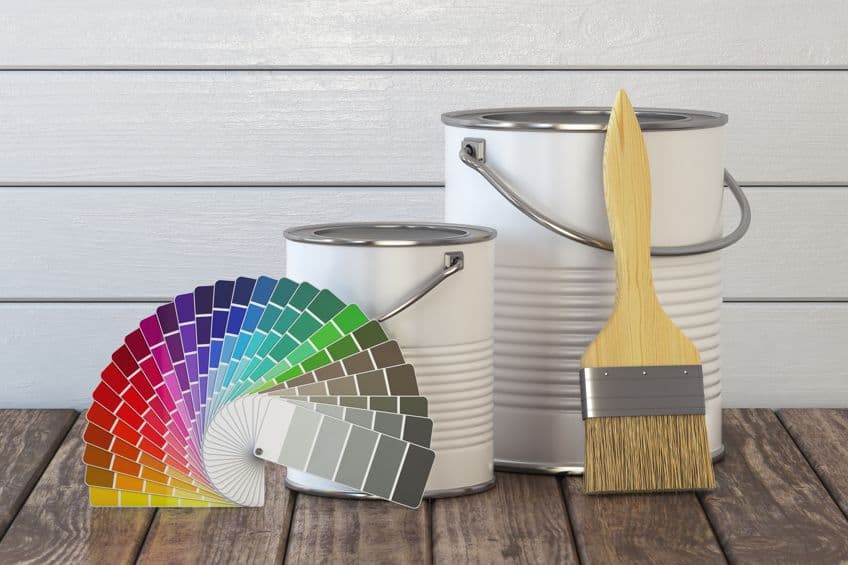
- Tarp and/or newspaper
- A set of clean cloths
- Gloves
- Eye goggles
- Face mask
Prepare Your Workspace
Preparing your workspace adequately can save you loads of time when painting. How do you prepare your workspace you ask? Well, one of the first things that you should do is lay down a tarp on the floor of your workspace and secure it with painter’s tape. You can use some old newspapers in a pinch, and you can use them to cover up anything else in the immediate area that you don’t want paint getting on.
Other than covering up things in your workspace, you ensure that your workspace is well-ventilated.
The best way to go about this is to ensure that you have a constant flow of air in and out of the space. Once your workspace is prepared, ensure that you are protected by wearing personal protective gear such as gloves, a face mask, and some goggles to protect your eyes.
Prepare Your Surface
Now that your workspace has been prepared it’s time to prepare your workpiece. The best place to start is by covering up any parts of the workpiece that you don’t want to get painted with some painter’s tape. Next, get a clean cloth and give any exposed metal on the surface a good once-over to remove any surface-level dust, dirt, or grime.

Now that your workspace is clean it’s time for you to prepare the surface. Using either a wire brush or some steel wool rough up the surface of your workpiece. This should ensure that your primer and paint have sufficient surface friction to adhere correctly. Once you’re happy with the job you’ve done brushing the surface, wash the surface with some soapy water, sand it lightly another time, and then remove wipe the surface with a damp cloth again before moving on to the next step in the process.
Prime Your Surface
Before we get into how to paint metal with acrylic paint, we need to address the final preparation step. If you’re going to paint metal with acrylic paint you are going to need a primer that not only works on metal but that has been designed specifically to work with acrylic paint. This might seem like an impossible task, but most metal primers are designed to work with both oil-based paints and acrylic-based paints. Give your primer a good shake to ensure that the heavier and lighter particles mix with one another once more. Next, pour some out into your painter’s tray and get some onto your brush and/or roller.
Apply the primer by following the length of the workpiece, ensuring that you get even uninterrupted coverage throughout the application process.
Once your first coat of primer has been applied, allow the prime to set for the manufacturer’s recommended time period, which is usually around three to five hours. Once this time has elapsed, apply a second coat of primer, and allow this one to set as well. Ensure that both coats of primer have been allowed to set and dry completely before moving on to the next step in the process.
Paint Your Surface
Once your primer has had a chance to dry completely it’s time to paint your workpiece. Just as you did with the primer, give the paint container a good shake to ensure the heavier particles at the bottom of the can are reintroduced into the rest of the mixture. Next, pour some paint into your painter tray and get some on your brush and/or roller.
Just as you did with the primer, apply the paint following the length of your workpiece, ensuring that each stroke applies an even coat of paint, even if they overlap a little bit. If your workpiece is large, try painting it in sections so it’s easier to manage.
Repeat this process until the entire workpiece has been painted and allow the paint to dry for the manufacturer’s recommended time period.

Once you’re sure your paint has dried, it’s time to apply a second coat. Why? Metal isn’t a very porous material, which means that paint isn’t absorbed into it very well. Adding an additional coat of paint not only reinforces the paint color but will ensure that your coating lasts longer as well. Once your second coat has been applied, allow it to dry for the manufacturer’s recommended time period.
Seal Your Workpiece (Optional)
Sealing your workpiece isn’t always necessary but, in some instances, it might be. If the acrylic paint you have chosen to use is exterior paint, then it’s likely robust enough to withstand things like impact, abrasion, heat, moisture, and UV damage. However, if you have chosen to use interior acrylic paint and your workpiece will be situated outdoors, you might want to apply a sealer.
Wondering how to seal acrylic paint on metal? Applying a sealer is easy and fairly straightforward.
Simply open the container, pour some out into a painter’s tray, and get some on a brush and roller. Apply an even coat following the length of your workpiece and allow the sealer to cure for the manufacturer’s recommended time period. If you have access to a paint sprayer, you can use it to apply sealer quicker and a lot more evenly too.
Tips and Tricks for Working With Acrylic paint
Even though acrylic paint is one of the most popular paint types around the world, there are little quirks that can make working with acrylic paint a bit tricky. Below are some common questions regarding the use of acrylic paint on metal and some ways you can work around these issues should you encounter them.

Can You Use Acrylic Paint on Metal Without Primer?
Can you use acrylic paint on metal without primer? Yes, you can. There are some metals and alloys that don’t need a primer to allow the paint to adhere well. Metals that don’t oxidize (or rust) tend not to need a primer to allow the paint to stick to them. These metals include but are not limited to stainless steel, gold, and platinum. Other instances where using a primer to paint metal might not be necessary is when the paint is self-priming. There are several types of all-in-one products that are essentially primer and paint combined, which are great products to have around if you’re working on a time-sensitive project.
These can be an alternative to using metal primer, given that the self-priming paint has been designed for use with metal.
Can You Remove Acrylic Paint From Metal?
It is entirely possible to remove acrylic paint from metal. How do you do this you ask? The best way to remove acrylic paint from metal is to use over-the-counter ammonia. Simply place some ammonia on a cloth and rub it on the painted area. Alternatively, you can dip your painted workpieces into a container of ammonia, just ensure that your workplace is really well-ventilated and there are no open flames nearby.
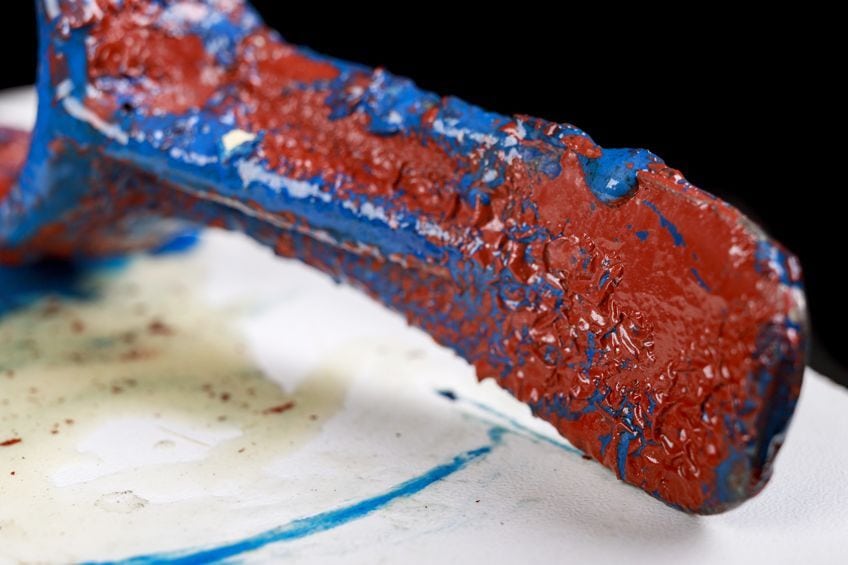
Now that you know that it’s possible to use acrylic paint on metal, what acrylic paint is, how acrylic paint works, and how to use acrylic paint to coat the surface of a metal workpiece, it’s time for you to get out there and put your newfound knowledge to the test. Remember to always work in a well-ventilated area and wear the appropriate personal protective gear when working with paints and solvents.
Frequently Asked Questions
What Other Paint Works on Metal Besides Acrylic Paint?
What other paint does work on metal besides acrylic paint? The two types of paint that are used on metal the most besides acrylic paint are enamel-based paints and oil-based paints, which have been designed for use with metal.
How Do You Seal Acrylic Paint on Metal?
Wondering how to seal acrylic paint on metal? The best way to seal acrylic paint on metal is to use an aerosolized sealer that will allow your metal workpiece to avoid the effects of moisture, heat, impact, abrasion, and UV damage.
What Can You Use to Seal Acrylic Paint on Metal?
There are a couple of ways you can go about sealing acrylic paint on your metal workpiece. Some of the most common products used to do so are sealers and varnishes, as they provide a waterproof coating. However, you might find that store-bought sealer works a lot better.
In 2005, Charlene completed her Wellness Diplomas in Therapeutic Aromatherapy and Reflexology from the International School of Reflexology and Meridian Therapy. She worked for a company offering corporate wellness programs for a couple of years, before opening up her own therapy practice. It was in 2015 that a friend, who was a digital marketer, asked her to join her company as a content creator, and this is where she found her excitement for writing.
Since joining the content writing world, she has gained a lot of experience over the years writing on a diverse selection of topics, from beauty, health, wellness, travel, and more. Due to various circumstances, she had to close her therapy practice and is now a full-time freelance writer. Being a creative person, she could not pass up the opportunity to contribute to the Art in Context team, where is was in her element, writing about a variety of art and craft topics. Contributing articles for over three years now, her knowledge in this area has grown, and she has gotten to explore her creativity and improve her research and writing skills.
Charlene Lewis has been working for artincontext.org since the relaunch in 2020. She is an experienced writer and mainly focuses on the topics of color theory, painting and drawing.
Learn more about Charlene Lewis and the Art in Context Team.
Cite this Article
Charlene, Lewis, “Can You Use Acrylic Paint on Metal? – Paint Metal With Acrylic.” Art in Context. November 28, 2022. URL: https://artincontext.org/can-you-use-acrylic-paint-on-metal/
Lewis, C. (2022, 28 November). Can You Use Acrylic Paint on Metal? – Paint Metal With Acrylic. Art in Context. https://artincontext.org/can-you-use-acrylic-paint-on-metal/
Lewis, Charlene. “Can You Use Acrylic Paint on Metal? – Paint Metal With Acrylic.” Art in Context, November 28, 2022. https://artincontext.org/can-you-use-acrylic-paint-on-metal/.


